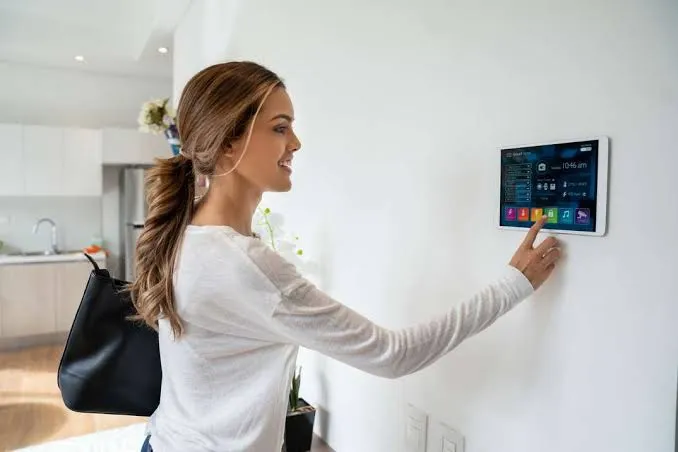Smart Solutions: Bridging Tech and Everyday Life

In the age of innovation, technology has become an integral part of daily life, transforming how we communicate, work, and interact with the world around us. Smart solutions are at the heart of this transformation, seamlessly connecting advanced technologies with practical, real-world applications. This article explores how smart solutions are bridging the gap between technology and everyday life, offering insights into their potential to improve efficiency, convenience, and sustainability.
What Are Smart Solutions?
Smart solutions refer to technologies and systems that use advanced algorithms, connectivity, and automation to solve problems and enhance functionality. These innovations integrate hardware, software, and data to deliver tailored, intelligent outcomes.
Key Characteristics of Smart Solutions
- Interconnectivity: Enabled by the Internet of Things (IoT), devices and systems communicate with one another in real time.
- Automation: Processes are streamlined with minimal human intervention.
- Adaptability: Solutions learn and adapt to user behaviors through machine learning (ML) and AI.
Applications of Smart Solutions in Everyday Life
1. Smart Homes
Smart homes have revolutionized residential living by enhancing convenience, security, and energy efficiency.
- Voice Assistants: Devices like Amazon Alexa and Google Assistant allow users to control lighting, thermostats, and appliances with simple voice commands.
- Energy Management: Smart thermostats, such as Nest, optimize energy usage by learning daily routines and adjusting temperatures accordingly.
- Home Security: Advanced surveillance systems with real-time alerts and remote monitoring ensure safety.
2. Smart Transportation
Transportation is being transformed by technologies designed to enhance safety, reduce congestion, and lower emissions.
- Electric Vehicles (EVs): Automobiles like Tesla offer eco-friendly alternatives to traditional fuel-powered cars.
- Autonomous Vehicles: Self-driving technology aims to reduce accidents and make transportation more efficient.
- Smart Traffic Management: IoT-enabled sensors optimize traffic flow, reducing delays and emissions.
3. Wearable Technology
Wearables are improving health and productivity by integrating smart capabilities into everyday accessories.
- Fitness Trackers: Devices like Fitbit monitor physical activity, heart rate, and sleep patterns.
- Smartwatches: Products such as the Apple Watch offer a blend of communication, fitness tracking, and health monitoring.
- Medical Wearables: Smart devices help manage chronic conditions by tracking vital signs and delivering alerts.
4. Smart Retail
Retail is evolving with smart technologies that enhance the shopping experience.
- Personalized Recommendations: AI algorithms analyze user preferences to suggest products.
- Checkout-Free Stores: Concepts like Amazon Go allow customers to shop and leave without traditional checkout processes.
- Inventory Management: IoT sensors ensure shelves are always stocked with popular items.
How Smart Solutions Drive Sustainability
Smart technologies contribute significantly to creating a more sustainable future by optimizing resource usage and reducing waste.
1. Energy Efficiency
- Smart Grids: Use AI to balance electricity supply and demand, minimizing waste.
- Renewable Integration: Smart systems facilitate the use of solar and wind energy in homes and businesses.
2. Waste Reduction
- Smart Bins: Equipped with sensors to monitor waste levels, enabling efficient collection.
- Recycling Innovations: Automated sorting systems powered by AI enhance recycling processes.
3. Water Conservation
- Smart Irrigation Systems: Use weather data to water crops only when necessary, conserving water.
- Leak Detection: IoT sensors identify leaks in plumbing systems before they become costly problems.
The Role of AI in Smart Solutions
AI is a driving force behind the effectiveness of smart solutions, enabling systems to learn, adapt, and predict user needs.
1. Predictive Analytics
AI-powered systems anticipate needs based on data trends, ensuring seamless service delivery.
2. Natural Language Processing (NLP)
Voice assistants and chatbots use NLP to understand and respond to human language, enhancing user interaction.
3. Personalized Experiences
AI tailors solutions to individual users, from shopping recommendations to custom fitness plans.
Overcoming Challenges in Implementing Smart Solutions
Despite their benefits, smart solutions face several challenges that must be addressed to ensure widespread adoption.
1. Privacy Concerns
With devices collecting vast amounts of data, ensuring user privacy is paramount.
- Solution: Employ robust encryption methods and transparent data usage policies.
2. High Costs
The initial investment in smart technologies can be prohibitive for some users.
- Solution: Encourage mass production and offer government incentives to reduce costs.
3. Connectivity Issues
Reliable internet access is essential for smart solutions, yet many areas lack adequate infrastructure.
- Solution: Expand broadband coverage and develop offline-compatible technologies.
The Future of Smart Solutions
The evolution of smart solutions is poised to make technology even more integrated into daily life.
1. 5G Connectivity
The rollout of 5G networks will enhance the speed and reliability of smart systems, supporting innovations like real-time augmented reality (AR).
2. Smart Cities
Urban areas will adopt more interconnected systems, from smart grids to AI-powered waste management, improving quality of life for residents.
3. Advanced Robotics
Robots equipped with AI will handle complex tasks, from elder care to automated manufacturing, further blending tech with human life.
Conclusion
Smart solutions represent the intersection of technology and practicality, making life more efficient, convenient, and sustainable. By addressing challenges and embracing advancements, we can look forward to a future where technology seamlessly integrates into every aspect of our lives, creating a smarter and more connected world.
